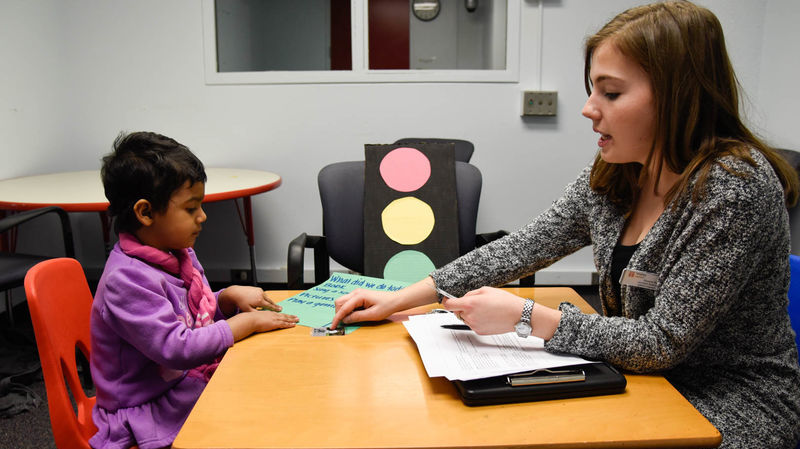
Childhood apraxia of speech (CAS) is a pediatric speech disorder that makes it difficult for kids with normal cognitive and language skills to intelligibly speak the words they want to say. It’s a motor disorder, where speech muscles aren’t weak or paralyzed but the brain can’t properly guide their movements to produce clear speech.
One-on-one therapy can help, and it’s useful to begin early. Edwin Maas, assistant professor of communication sciences and disorders and co-director of the Speech, Language, and Brain Laboratory (known as the SLAB Lab), has been awarded a five-year, $2.16 million grant from the National Institute on Deafness and Other Communication Disorders to test different ways of treating the disorder.
The study will enroll groups of children under age 10 in “intensive summer camp” sessions during the next three summers. The day camps, which will give children with CAS different kinds of one-on-one training with speech-language pathology graduate students under supervision of experienced speech-language pathologists, are aimed at discovering which therapy techniques are most effective at treating CAS.
“The goal,” says Maas, “is really to help speech-language pathologists make better clinical decisions and ultimately make a difference in people’s lives.”
CAS is believed to affect 40,000 to 160,000 children under 10 in the United States. Its causes aren’t fully understood, and it can be confusing to diagnose because symptoms such as delayed speech can be associated with other conditions. CAS may limit one’s ability to participate fully in school, social activities and ultimately employment. It can also affect literacy, as learning to write in an alphabetic language like English is connected to the sounds of speech.
Interventions to help children with CAS speak more intelligibly has potentially life-changing consequences, but CAS is challenging to treat and hasn’t been widely studied.
“There are other speech disorders that respond more quickly to treatment. Apraxia tends to take a lot longer to make the same kinds of gains,” Maas says.
Maas’s study will use variations of an approach called integral stimulation, which encourages children to look at, listen to, and try to imitate a therapist pronouncing target phrases. A child who may be working on pronouncing a particular phrase like “Hi, mom” can see how the therapist’s mouth moves and what sounds are made. The child will observe and listen, then try to say the phrase together with the therapist and then without the therapist. “It’s hard work for them,” Maas says.
Researchers in the study will look at whether simple or complex words work better in training and compare real words versus made-up words. They will also examine whether sessions packed closely together or spread out are more effective.
The treatment, called Apraxia of Speech Systematic Integral Stimulation Treatment (ASSIST), is based on ideas that have been shown to improve learning of motor skills. For example, earlier research has shown that children who received feedback on their speech with every attempt did better while in sessions, but those who received less feedback better retained the lessons. In this study’s treatment, children will receive feedback on less than 100 percent of their attempts.
Children’s speech accuracy in response to the training will be scored by researchers after the treatment and also recorded so that another set of listeners, recruited from the general public, will be able to evaluate the intelligibility of the speech. Control groups will allow comparison of each approach versus no treatment (children who receive no treatment during the first half of each summer camp will switch and receive training in the second half), and each year’s findings will inform the next year’s study setup. Parents of children with CAS still have the opportunity to apply for spots in the second- and third-year (2020 and 2021) trials.
Each of the three summer sessions, conducted on Temple’s campus, will enroll a different set of children and test different ways to use 16 hours of training.
“What we're trying to do is find ways to get the most out of the limited sessions a therapist may have,” Maas says. “We're saying, ‘Okay, if you get 16 hours, what gets you the biggest bang for your buck?’ Is it better to cram it into two weeks? Or is it better to spread it out over four weeks? Is it better to focus on simple words or complex words, or simple or complex non-words? How can we help the speech-language pathologist help these children and their families?”
